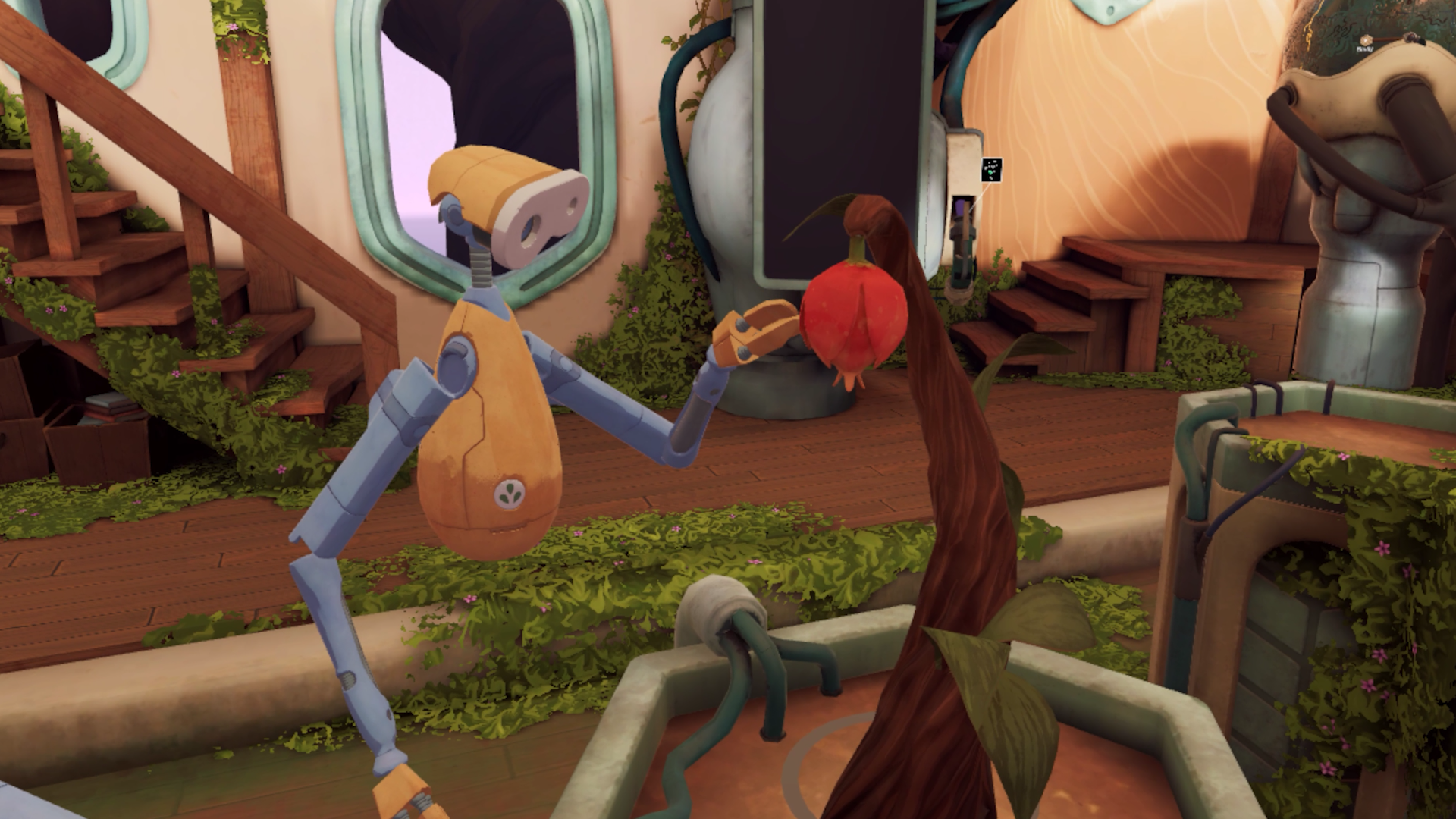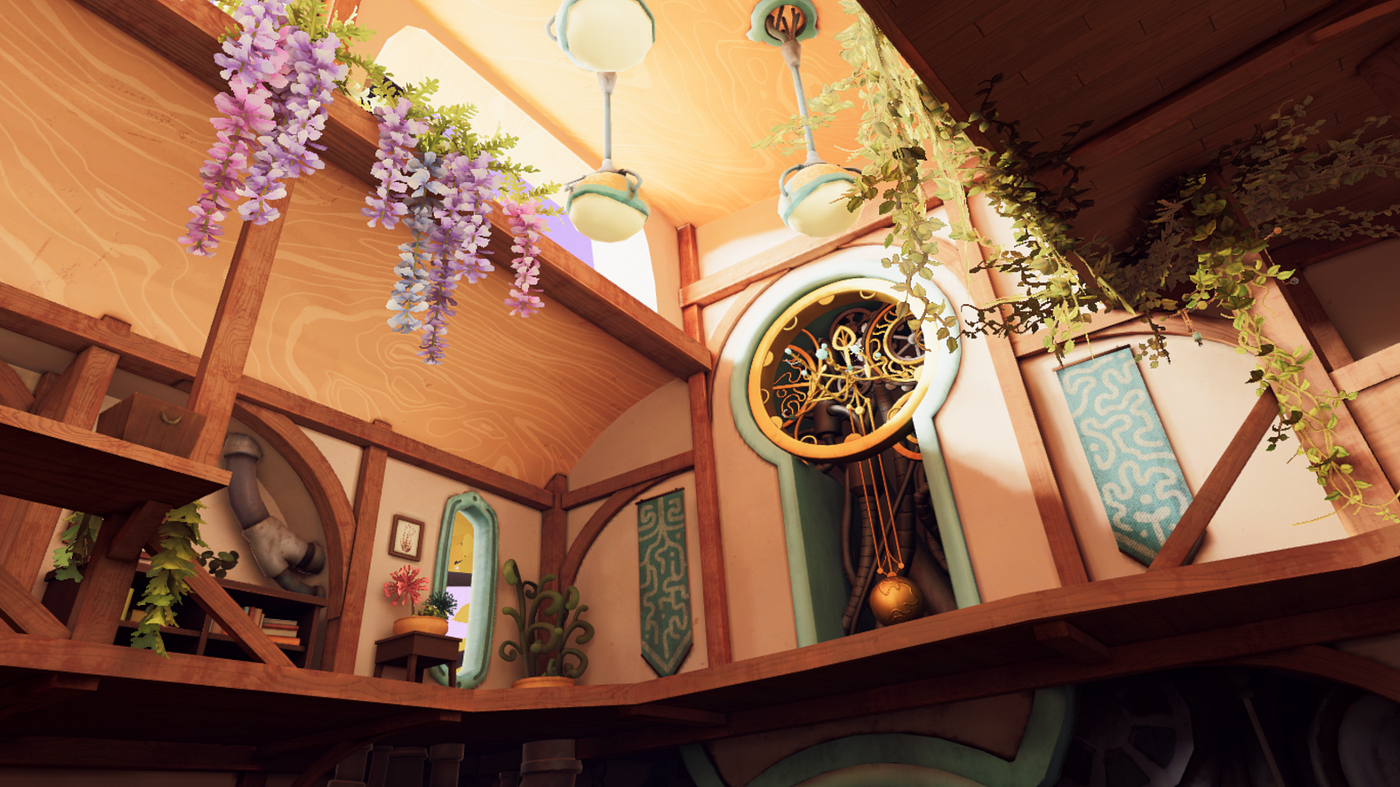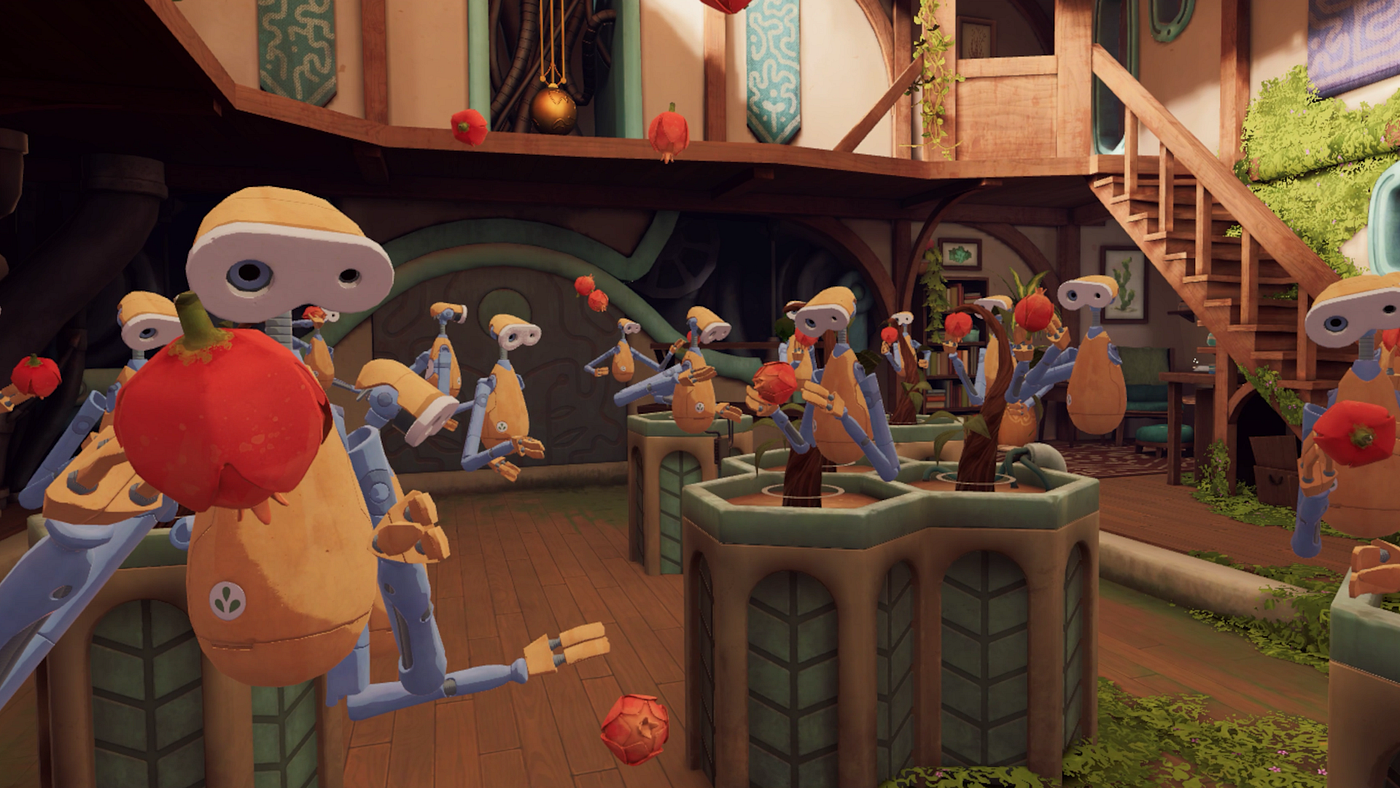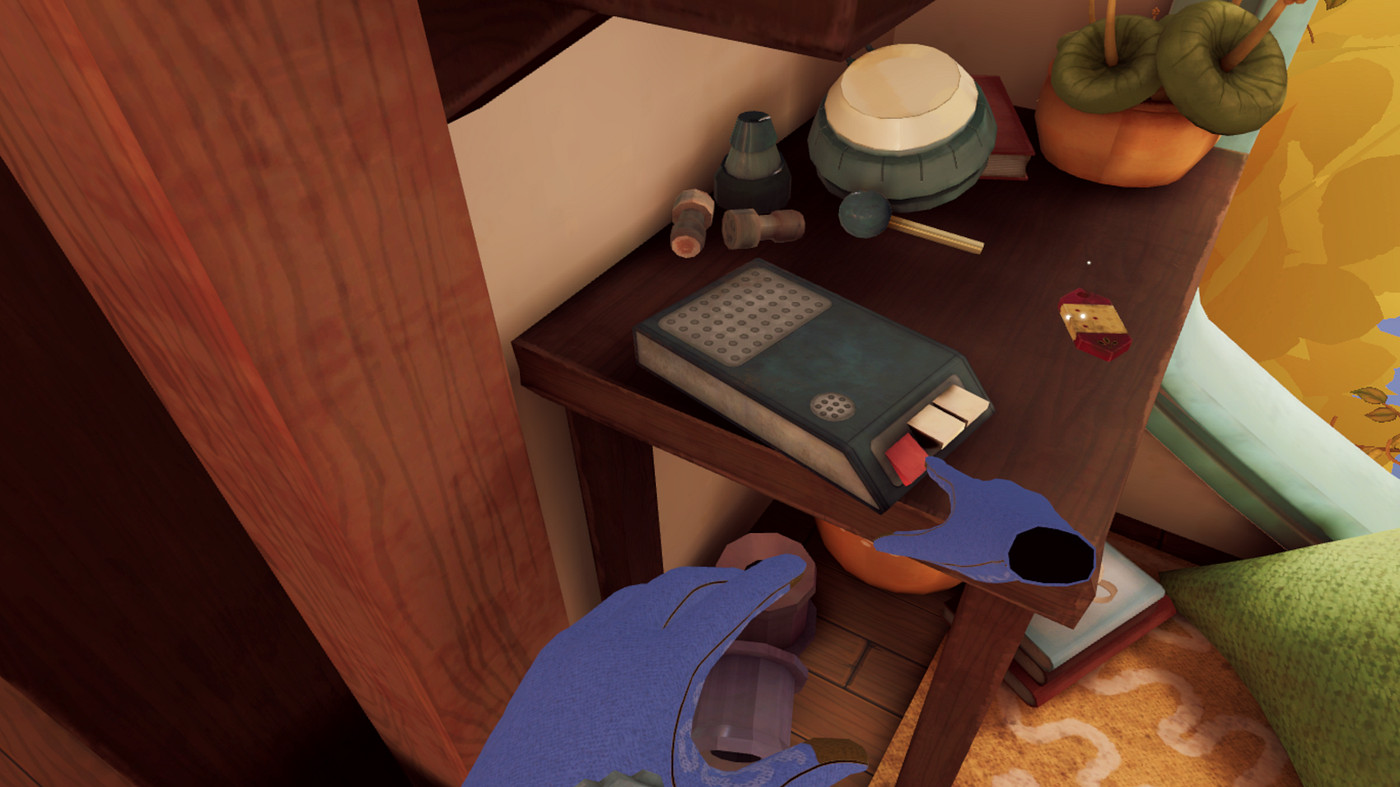‘The Last Clockwinder’ Is An Instant Classic (VR Review)
Pontoco’s newest game for Quest & Steam VR is excellently designed & immensely rewarding


I step into The Clocktower, an ancient, massive tree, and turn the lights on, illuminating a tastefully furnished home. I look for Edea, The Clocktower’s current attendant, and find only the gloves she used to keep The Clocktower running. I don the gloves, move to a control panel, and pull a lever.
The furnished floor before me disappears into darkness and another, different floor rises in its place, this one covered with fruit plants. It becomes clear the plants require harvesting them into a complex tubing system. To do so for even one plant takes two people, but I’m utterly alone. Until, using the gloves, I record myself plucking and tossing the fruit into a tube, which causes a robot to appear, repeating the action constantly and consistently.
So begins The Last Clockwinder, a gorgeous, lively VR game filled with accessible puzzles underscored by a moving narrative.
In Clockwinder, you play as Jules (voiced by Caitlyn Elizabeth), who is attempting to restart the Clocktower by completing a series of automation puzzles. Along the way, Jules can listen to recordings left behind by Edea (voiced by Cissy Jones), which recount their past interactions and Edea’s thoughts about an intentionally vague fallout that occurred between the two women. Jules is also actively in radio contact with Levi (voiced by Ray Chase), whose spaceship she currently works on.

First and foremost, The Clocktower is a stunningly beautiful space. Every texture, from plants, pipes, tape recorders, keycards, and so much more, is captured in careful, meticulous detail. Sunlight brightens the space, elevating every color. Clockwinder shines brightest as you change floors and discover new, captivating spaces to explore. Pardon the pun, but I was floored each time I unlocked another floor, and The Clocktower continued to grow in complexity, scope, and imagination. I’m unable to think of another VR game with freeform movement where the visuals are so exquisitely polished.
Most floors feature an automation puzzle, with several floors having to be completed in a specific order, requiring players to record themselves performing a series of movements or actions that the robots then mimic to orchestrate a solution. Firstly, it’s a novel take on AI companions featured in all video games. Typically, you command an AI companion to perform a standard action or they operate in an automatic but limited capacity. Clockwinder allows me to program the robots with great freedom, adhering only to the one, two, or four second recording limit. This is heightened by the power of VR, as the controls allow me to specifically and precisely direct their actions as I see fit by plucking the fruit that’s right in front of me with my own two hands.
Secondly, notice I never said “the solution” there? See, there is no right way to solve any puzzle. In fact, solving each puzzle is fairly straightforward. It’s how each puzzle allows freedom of choice, placing the agency into players’ hands, literally, to decide what the solution should be.

As there are a myriad of ways to solve a puzzle, each player will have a different, yet equally rewarding experience. Some players will be able to produce the required automation with only five robots, while others might require fifteen, as there’s no limit in the amount of robots you can summon. In other words, you’ll always have all the help you need. This creates a high level of accessibility, as Clockwinder’s level of difficulty automatically matches the player’s level of experience. I find this far more welcoming than having to select the ideal difficulty in a VR (or really any) game.
Get Patrick B. McLean’s stories in your inbox
Join Medium for free to get updates from this writer.
SubscribeSubscribe
While such open-ended puzzle design has been done before, I have yet to encounter it in another VR game. It’s this ingeniously original and utterly enjoyable puzzle design that makes Clockwinder special and unique, compared to when players must parse out a specific solution from specific clues, details, and prompts.
Underscoring the puzzle solving, is Joel Corelitz’s brilliant soundtrack. If you have four plants to harvest, after automating the process to harvest one plant, part of a piano and string score begins. As you successfully automate another part of the puzzle, more instruments join in until The Clocktower is filled with lively, active music, providing auditory satisfaction every time upon a puzzle’s completion.
But, it’s Clockwinder’s narrative that will enrapture the hearts and minds of the larger immersive community. Like the puzzles, the narrative’s design is a tour de force. The story’s throughline is silent regret and hopeful reconciliation. Granted, this is the bread-and-butter of most indie video games, VR or otherwise. The ingenuity of Clockwinder, lies in how the characters and their interpersonal dynamics are defined. Or, actually, not.

Other than establishing that Jules and Edea had a close relationship, it’s never explained what kind of a relationship it is. The ambiguity allows players to project whatever details resonate with them onto it. For me, Jules and Edea’s relationship became one of a daughter and a mother. Yet, the women’s dynamic easily could be that of siblings, or simply best friends. Likewise, Levi and Jules are romantic partners, or, at least to me. For other players, who knows?
Everyone is going to run a separate yet equally rewarding emotional gauntlet in Clockwinder as the narrative allows and supports all interpretations. The ability to be in Jules’ head and see the world through her eyes thanks to the VR headset allows players to project their personal personifications. While Clockwinder isn’t the first VR game to successfully leverage the power of the “empathy machine,” doing so effectively is still no small feat.
Between the fantastic open-ended puzzle design, an emotionally accessible narrative, a stunning soundtrack, and a visually pleasing location, The Last Clockwinder is the greatest VR game I have ever played. In fact, it’s probably the greatest VR experience you can have to date on the Quest. Pontoco has carefully crafted every detail, from minute textures to the deft story beats, fostering them so they not only flourish, but harmonize with the greater whole. Without a doubt, The Last Clockwinder is the complete immersive experience package.
The Last Clockwinder is available now on Meta Quest and Steam for $24.99
Discover the latest immersive events, festivals, workshops, and more at our new site EVERYTHING IMMERSIVE, new home of NoPro’s show listings.
NoPro is a labor of love made possible by our generous Patreon backers. Join them today!
In addition to the No Proscenium website, our podcast, and our newsletters, you can find NoPro on Twitter, Facebook, YouTube, Instagram, in the Facebook community Everything Immersive, and on our Discord.